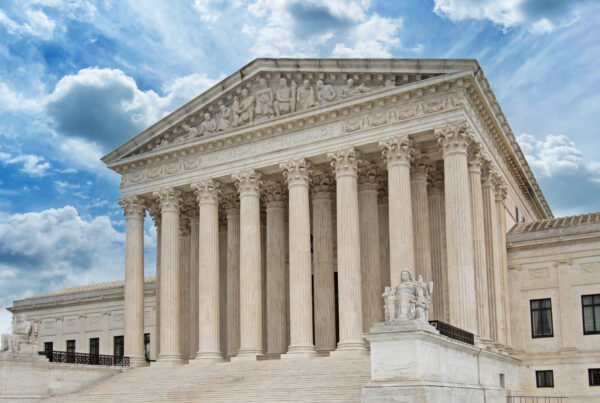On Thursday, March 11, President Biden signed the American Rescue Plan Act of 2021 (“the Act”) into law. In addition to providing another round of direct stimulus payments to eligible taxpayers, it also extends and expands some existing tax credits. Many of these are temporary provisions applicable only to the 2021 tax year.
The Act also includes some minor changes to the PPP loan program eligibility and also creates a new Restaurant Revitalization Fund to help the struggling hospitality industry.
Direct Payments
The Act provides for direct stimulus payments of up to $1,400 for eligible taxpayers and dependents. For this round of stimulus payments, the eligible income levels have been lowered. Single taxpayers with an adjusted gross income of less than $75,000 will receive the full amount. Taxpayers making more than $75,000 will receive a lower amount, and the payments are fully phased out to zero for taxpayers with over $80,000 of AGI. These income thresholds are doubled for married taxpayers.
Unlike prior stimulus payments, all dependents claimed on a tax return will receive a stimulus payment. Prior stimulus payments for dependents were limited to children under the age of 17.
Like with previous stimulus payments, the amounts received are actually an advanced credit of 2021 taxes. 2020 income will be used to determine the eligible stimulus payment unless the taxpayer has not filed their 2020 tax return, in which case 2019 income will be used.
The IRS “Get my Payment” tool is already available for taxpayers to track their stimulus payments, and some taxpayers have already received their payments.
Child Tax Credit
The child tax credit is significantly expanded for the 2021 tax year. Prior law provided for a child tax credit of up to $2,000 per child, with $1,400 per child being a refundable credit, meaning it would be received as a refund even if the taxpayer had no tax liability to offset. The Act increases the maximum child tax credit to $3,000 per child, or $3,600 for children under the age of six. The credit is entirely refundable for 2021.
Under previous law, a child had to be under the age of 17 in order to qualify for the credit. The new Act extends the credit to include children who are 17 years old.
The Act also requires the IRS to begin issuing advance payments of the new child tax credit, up to 50% of the eligible credit, beginning on July 1, 2021. There will also be a website created where taxpayers can provide information on changes (such as if a dependent no longer qualifies) or to opt-out of the advance credit payments.
Earned Income Tax Credit
The Act enhances the 2021 Earned Income Tax Credit for taxpayers without children. The amount of income at which you are eligible for the credit has increased, and the maximum credit has increased. The minimum age at which you can claim the credit without children will be 19 years old (down from 25). It also extends the provision whereby taxpayers can use their 2019 income to determine the eligible credit amount instead of 2021 income.
Child and Dependent Care Credit
The child and dependent care credit has also been expanded temporarily for the 2021 tax year. Under prior law, credit was available for between 20-35% of qualified dependent care expenses. The credit was calculated on up to $3,000 of expenses for one dependent or a maximum of $6,000 of expenses for two or more dependents.
For 2021, the credit has been increased to 50% of expenses for taxpayers with an adjusted gross income of less than $125,000. The credit percentage will be phased out down to as low as 20% for higher income levels, until being fully phased out for taxpayers with AGI over $400,000.
The Act also increases the amount that can be excluded from income for an employer-provided dependent care assistance program for 2021 to $10,500.
Unemployment Relief
The additional $300 weekly unemployment benefit relief has been extended to September 2021. The Act also excludes the first $10,200 of unemployment benefits from income in 2020 for taxpayers with less than $150,000 of income. The IRS has advised those who have already filed their 2020 tax returns not to file amended tax returns. The IRS Commissioner has advised that he believes the IRS will be able to issue automatic refunds to those who already reported unemployment benefits as taxable income.
Exclusion of Student Loan Forgiveness
The Act eliminates any amount of student loan forgiveness from taxable income if the discharge of debt occurs after December 31, 2020, and before January 1, 2026.
Paid Sick and Family Leave
The paid sick and family leave credit, originally set to expire on March 31, 2021, has been extended to September 30, 2021. The applicable wages were increased to $12,000 (from $10,000). Additionally, employers may now claim the credit for providing time off to employees to receive a coronavirus vaccine or to recover from vaccine-related illness. Beginning on April 1, the credit will be available against Medicare taxes.
Employer Retention Credit
The Act also extends the employer retention credit through the end of 2021. It was originally scheduled to expire on June 30, 2021. Beginning on July 1, 2021, the credit will be available against Medicare taxes.
Premium Tax Credits
For 2021 and 2022, the Act modifies the affordability percentages used to calculate the premium tax credit. For 2021, it also makes advance premium credits available for taxpayers receiving unemployment benefits. For 2020, taxpayers who received an excess credit will not have to recognize recapture income.
PPP Loan Changes
The Act expands PPP eligibility to include additional non-profit organizations and internet publishing organizations.
Restaurant Revitalization Grants
The Act provides for a new grant program to aid the hard-hit hospitality industry. $28.6 billion has been provided for a newly created Restaurant Revitalization Fund. Grants of up to $10 million in the aggregate ($5 million per location) will be available to eligible entities and affiliates. The grants will be applied for directly with the SBA, unlike the PPP program which involved filing applications through a bank. Eligible entities include restaurants, caterers, food trucks and stands, bars, and distilleries and taprooms where tastings are available. Entities with more than 20 locations are ineligible for any grant.
The grant will be equal to the pandemic-related revenue loss, which generally will be the excess of 2019 gross receipts over 2020 gross receipts. Grants must be used for eligible expenses, which include payroll, mortgage payments, rent, utilities, maintenance, personal protective equipment, supplies, food and other operating expenses. Unused funds must be returned if not spent before December 31, 2021 or if the restaurant goes out of business prior to using all of the funds.
Over the first 21 days of the program, priority will be given to women and veteran-owned businesses, as well as socially and economically disadvantaged small businesses. After the first 21 days, the program will be open to all eligible applicants. The SBA is expected to issue further guidance in the coming weeks.
EIDL and Restaurant Revitalization Grants are not Taxable Income
The Act extends the treatment for PPP loans to targeted EIDL grants and restaurant revitalization grants. These grants will be excluded from taxable income, and no related deductions or basis adjustments will be disallowed as deductions against taxable income.





